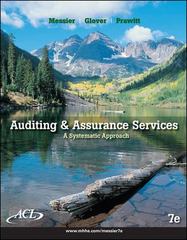Question
A. Engmann, Inc. Income Statement (expressed in millions, except per share data) for the Year Ended December 31, 2020 2020 2019 Sales $ 2,700.00 $
A. Engmann, Inc. Income Statement (expressed in millions, except per share data) for the Year Ended December 31, 2020 2020 2019 Sales $ 2,700.00 $ 2,650.00 Less Cost of goods sold 2,025.00 1,980.00 Gross profit 675.00 670.00 Less Operating expenses: Selling expenses 90.00 83.00 General and administrative expense 67.50 64.50 Depreciation and amortization expense 135.00 134.50 Total operating expense 295.50 282.00 Net operating income (EBIT or earnings before interest and tax) 382.50 388.00 Less Interest expense 67.50 81.20 Earnings before taxes 315.00 306.80 Less Income taxes 110.25 105.90 Net income 204.75 200.90 Additional information: Dividends paid to stockholders $ 45.00 $ 36.90 Number of common shares outstanding 90.00 90.00 Earnings per share (EPS) $ 2.28 $ 2.23 Dividend per share 0.50 0.41 Price per share 68.22 66.50 A. Engmann. Inc. Balance Sheet ($ millions) At 31st December, 2020 2020 2019 2020 2019 Assets Liabilities and Owners' Equity Cash $ 90.00 $ 94.50 Accounts payable $ 189.00 $ 184.50 Accounts receivable 162.00 139.50 Accrued expenses 45.00 45.00 Inventory 378.00 229.50 Short-term notes 54.00 63.00 Other current assets 13.50 13.50 Total current liabilities 288.00 292.50 Total current assets 643.50 477.00 Long-term debt 771.75 720.00 Gross plant and equipment 1,845.00 1,669.50 Total liabilities 1,059.75 1,012.50 Less accumulated depreciation 517.00 382.50 Common stockholders' equity Net plant and equipment 1,327.50 1,287.00 Common stock - par value 45.00 45.00 Total assets 1,971.00 1,764.00 Paid in capital 324.00 324.00 Retained earnings 542.25 382.50 Total common stockholders' equity 911.25 751.50 Total liabilities and stockholders' equity 1,971.00 1,764.00 Given the information above calculate the following financial ratios for 2019 and 2020. 1. Current ratio 2. Quick (acid-test) ratio 3. Inventory turnover 4. Days of holding inventory(DOH) 5. Receivables turnover ratio 6. Average collection period (Receivable days) 7. Payables turnover ratio 8. Average payment period (Payable days) 9. Fixed assets turnover ratio 10. Total assets turnover ratio 11. Debt ratio 12. Debt to equity ratio 13. Equity Multiplier 14. Debt to capital ratio 15. Times interest earned ratio 16. Gross profit margin 17. Net profit margin 18. Return on Assets (ROA) 19. Return on equity (ROE). 20. Market/book (M/B) ratio 21. Price/Earnings ratio 22. Dividend Payout ratio 23. Dividend Retention Ratio You are to compute the ratios from numbers 1 to 23 for 2019 and 2020. Interpret the ratios and give possible reasons for the trends you see based on your understanding of the ratios and what goes into their computation. The focus should be on doing a good interpretation or analysis on the ratios calculated and not just computing the ratios and leaving it at that. Please take note of
a and b. a) What will be A. Engmann Incs average payment period for 2019 if historically annual credit purchases have represented about 80% of cost of goods sold? b) What will be the A. Engmann Inc.s average payment period for 2020 if historically annual credit purchases have represented about 80% of cost of goods sold?
Step by Step Solution
There are 3 Steps involved in it
Step: 1

Get Instant Access to Expert-Tailored Solutions
See step-by-step solutions with expert insights and AI powered tools for academic success
Step: 2

Step: 3

Ace Your Homework with AI
Get the answers you need in no time with our AI-driven, step-by-step assistance
Get Started


